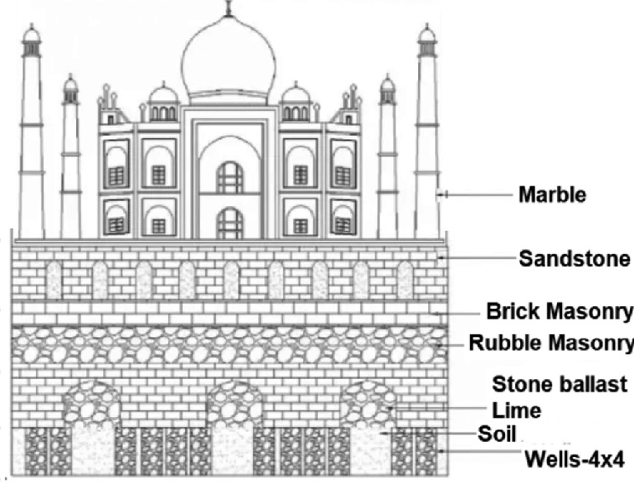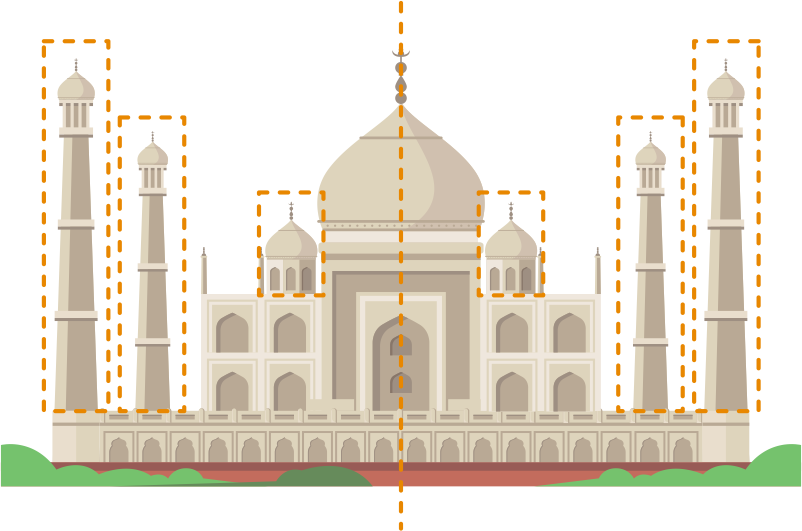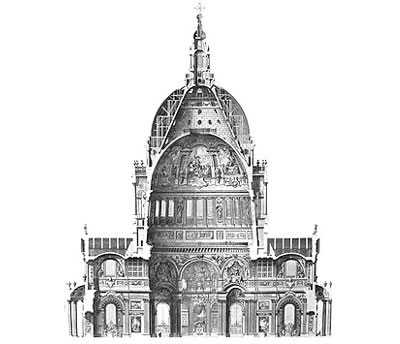Taj Mahal, a UNESCO World Heritage Site and one of the Seven Wonders of the World, is celebrated as a symbol of eternal love. Built by Mughal Emperor Shah Jahan in memory of his wife Mumtaz Mahal, this architectural masterpiece also stands as a testament to the incredible civil engineering and craftsmanship of its time.
Historical Context:
Construction of the Taj Mahal began in 1632 and was completed in 1653, taking about 22 years to finish. Over 20,000 artisans and laborers, including engineers, masons, and craftsmen from across Asia, contributed to its construction. The design is attributed to Ustad Ahmad Lahori, a renowned Mughal architect, and was supervised by a team of experts in various fields.
Engineering Feats of the Taj Mahal:
1. Foundation: A Floating Wonder
- Challenge: The Taj Mahal is situated on the banks of the Yamuna River, where the soil is loose and prone to settlement.
- Solution: Engineers used a unique foundation technique, building it on a platform made of stone and mortar to prevent sinking.
- The base is supported by timber piles, which is supposed to be ebony rose wood having strong resistance against expand or contract under steady stream of moisture.
This floating foundation distributes the weight of the monument evenly, ensuring stability over centuries.

2. Symmetry and Alignment
- Taj Mahal is renowned for its perfect symmetry, a hallmark of Mughal architecture.
- The mausoleum, minarets, mosque, and guest house are all aligned precisely on a central axis.
- Engineers used mathematical precision to ensure the balance of the structure.

3. Minarets: Earthquake Resilience
The four minarets surrounding the main dome are slightly tilted outward.
- Purpose: In the event of an earthquake, the minarets would collapse outward, protecting the main structure.
4. Dome Engineering
The central dome, towering at 73 meters (240 feet), is a double-dome structure.
- Outer Dome: Provides aesthetic grandeur.
- Inner Dome: Maintains structural integrity.
- The use of catenary curves ensures that the weight of the dome is evenly distributed to the base walls.

5. Materials and Construction Techniques
The Taj Mahal is primarily constructed of white Makrana marble, sourced from Rajasthan, along with other materials like:
- Red sandstone for the base and surrounding structures.
- Jasper, jade, turquoise, and lapis lazuli for intricate inlays.
Lime mortar was used as the binding agent for stones, showcasing excellent durability.
6. Water Management System
- The Taj Mahal has an ingenious hydraulic system for water supply, which is still functional.
- Aqueducts and canals brought water from the Yamuna River.
- Overhead tanks and underground channels ensured a steady water supply for the fountains and gardens.
7. The Charbagh Garden Design
- The surrounding charbagh (four-part) gardens follow traditional Persian landscaping principles.
- Divided into four equal quadrants by water channels, symbolizing paradise in Islamic culture.
- Engineers ensured a natural flow of water to maintain greenery and fountains without pumps.
Challenges:
Air Pollution: Acid rain has caused discoloration of the white marble.
- Solutions include regular cleaning with mud packs to restore its shine
Riverbank Erosion: Yamuna River’s decreasing water levels threaten the foundation’s stability.
- Restoration efforts include replenishing the groundwater table.
Visitor Impact: Heavy tourist footfall contributes to wear and tear.
- Restrictions and guidelines for visitors aim to minimize damage.
Conclusion:
Taj Mahal engineering reflects the ingenuity of Mughal-era engineers who combined traditional techniques with innovative solutions to create a monument that has stood the test of time.
For modern engineers, Taj Mahal serves as a reminder that great structures are not just built for their time but for eternity.
What inspires you most about Taj Mahal’s engineering? Share your thoughts in the comments below!


